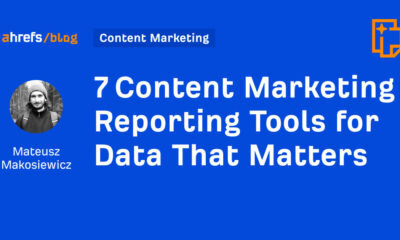
The customer always comes first. This proverbial adage has been used countless times. Yet, it remains just as important today as before. Consumers continue to shift to digital-first lifestyles at unprecedented rates. In order to get in front of these audiences, brands began to realize that they needed to show they cared. That consumers deserved one-to-one experiences based on their own interests. They deserved individualization.
The solution to this seemed simple. More data. The bigger the better. While the power and scalability of this Big Data was undeniable in terms of interacting with consumers, it also presented previously unforeseen issues like accessibility and actionability. With all this new data, how would a brand orchestrate and track touchpoints across solutions in order to form actionable insights and generate tangible revenue? The power is there, but harnessing it was still an unknown.
The Big Data dilemma
The acceleration to a digital-first culture has certainly increased our ability to be agile. But in this pursuit, we’ve also cultivated complexity. Multiple project management apps, an email vendor, landing page host, direct mail solution, the list goes on. Today, marketing teams work with dozens of different tools to make their lives easier. But as each solution is adopted, the tech web becomes harder to navigate. The data is at our fingertips, but it’s at the expense of cleanliness and effective orchestration between the different systems.
For many, the problem lies in having too many apps—as many CTOs will tell you. But, if that were the case, things like your smartphone and your laptop would be nearly impossible to navigate. The real issue lies in the connectivity between the marketing tools that brands are using. Personalizing messages and marketing outreach across a consumer’s path to conversion is hard enough. But it’s exponentially compounded when tools, solutions, and data are not in conversation with each other. The goal should not be to shed weight but to create one integrated, dynamic, and accessible view of customer data.
This desire for better and more actionable insights has led to the emergence of Customer Data Platforms (CDPs), which aim to unify customer and prospect data in one ecosystem. It provides a singular “data vault” to simplify how we reach customers, but it doesn’t solve all issues completely. The next step is to take this data and put it to work. To make it accessible and actionable. To use it to inform more calculated business decisions and craft more individualized marketing campaigns.
Big Data should flow
Agglomerating data is a big step. So big, in fact, that many marketers stop here. But this is only half the battle. At this stage, the data is essentially a black box, only seen or understood by a few. In order to unlock its true power, it’s important to make the data accessible and actionable everywhere. Unlocking this data not only makes it easier for teams to share, collaborate, and act on insights it also demystifies the process. This helps marketers learn to ask the right questions when figuring out how to optimize their efforts.
To achieve this, it’s important to work with a partner that can play well with the systems that are already in place. If the CDP isn’t able to recognize current solutions being used, then all of the benefits and effectively the point of a CDP are lost. The aim of the CDP is to scale and improve upon what internal teams are already doing while providing them with a uniform look at all customer data.
How to unlock the value of your data
We’ve discussed some issues that can arise from Big Data and why it’s important nonetheless. With that in mind, here are a few ways that marketers can use current marketing technologies and strategies in order to make the most of their data.
Ensure low- or no-code functionality
One of the more grueling aspects of data management is just that: the management itself. Exporting and importing data, creating charts, pulling specific accounts. It can be daunting. Work with tooling that enables marketers to drag, drop, and autofill many of these elements to empower them to dig into the data more readily.
Pair first-party data with intent
Both first-party and third-party data can effectively engage and convert target audiences. But relying on one data set over the other would be a mistake. First-party data is an amazing way to find insights about the products or services consumers are most interested in once they come to your site, but it doesn’t extend much beyond that. Enrich your first-party data with third-party to get more insights into consumers’ overall online behaviors, actions, and interests.
Invest in cookie-less identity resolution practices
The deprecation of cookies isn’t quite here yet, but it’s an inevitability with Apple and Google’s announcements last year. Because of this, it’s important for marketers to develop a multifaceted approach to identify and engage with customers across all marketing channels and in each stage of the sales funnel. The most powerful way to do this is to continuously and automatically enhance your first-party data with rich, third-party data that tells you how consumer attitudes are shifting in real-time.
Don’t separate learnings from action
In other words, don’t make things too complicated. CDPs are great at connecting data, but the next step is to get it into the hands of those who will actually be using it. Analytics tools are great for those who delve into them on a daily basis. But the real power comes from taking the data collected within the CDP and making it accessible to all users in a network through the apps and tools that they use most.
Conclusion
Data can and should be a great democratizer for marketing teams. Too often, marketers feel that data is inaccessible or confusing. As the shift to digital continues to intensify, a shift also needs to happen within marketing teams. Marketing automation and insights tools can work to “open the curtain” on the truth that the data are actually revealing. With this accessibility, insights can be obtained in a quick and independent way, enabling marketers to pivot and optimize more effectively than ever before.
To read more about this topic, you can download The Business Case for Data Usability, written by Zeta.


































You must be logged in to post a comment Login